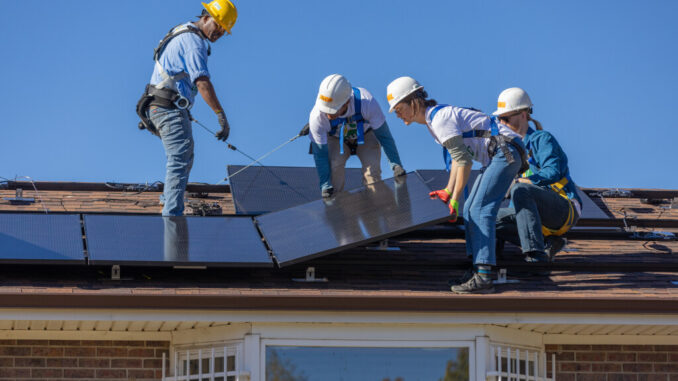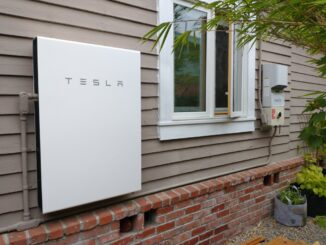
The following commentary was written by Larry Glover, a Maryland-based energy marketing & communications subject matter expert and community engagement specialist. See our commentary guidelines for more information.
We just lived through the hottest summer in recorded human history. From coast to coast, the United States set heat records, the brunt of which underserved communities felt the most.
One thing we were fortunate enough not to experience this time were rolling blackouts due to energy shortfalls. But we came close. In Texas, for example, rooftop solar helped keep the state’s grid online during the hottest summer on record.
Despite its benefits, the real value of rooftop solar isn’t always acknowledged as a solution to climate change and the needs of our electricity grid. We have seen some states take the lead, but we must act quickly to leverage resources to benefit underserved communities.
As climate disasters become more normal, our state and national grids will be tested more often. We can resolve this sad reality, however. Ensuring our nation’s clean energy movement is both inclusive and empowering has never been more important.
Here’s what I believe: Rooftop solar and batteries have a proven track record to deliver economic, community, and environmental benefits to everyone – and have the potential to positively impact our entire grid distribution for the better.
Not only are individual rooftop solar and battery systems critical for our clean energy future, but this technology can be connected and serve as a massive, distributed, power plant. Called a Virtual Power Plant (VPP), these networked systems can help bring value and grid stability and contribute to our clean air goals by reducing CO2 emissions.
For example, ConnectedSolutions has solar and battery system programs in Connecticut, Massachusetts, New Hampshire, and Rhode Island. The goal is to lower grid costs for all residents. Replicable programs such as these make it easier for home and small businesses to share their clean electrons when the grid needs it most, bolster climate and clean energy goals and help to mitigate unnecessary costs to grid infrastructure.
If we take the best of what we know and apply it to low-income and underserved communities, we can create energy solutions with enormous benefit to the communities that need it most. Harnessing the benefits of VPPs and connecting rooftop solar and batteries will deliver benefits with far greater impact than any of those initiatives applied individually. Bills introduced in Michigan this year (HB 4840 and HB 4839) proposed not only to create a virtual power plant, but also provide additional, targeted incentives to get batteries into the low- and moderate-income (LMI) communities that have experienced the most severe impacts of power outages.
In 2022, more than 140 million people across the US were impacted by either rolling blackouts or calls to conserve power due to extreme weather. The proven reliability of local solar and batteries is paramount to ensuring that all of our communities stay safe.
Building virtual power plants in LMI communities offers immense potential for positive change. In fact, the Department of Energy recently just released a new report about the benefits of VPPs, and they found that tripling VPP capacity from 80 gigawatts to 160 gigawatts by 2030 could save ratepayers $10 billion per year in grid costs. Earlier this year, Brattle released a report that found that VPPs could save utilities $15-$35 billion in capacity investments over the next 10 years. Regardless of which study turns out to be accurate, the opportunity before us is immense. It can provide reliable and affordable electricity access while reducing greenhouse gas emissions. We should easily conclude that rooftop solar is a necessary element in the energy solution for communities.
There is a risk, however, that these innovative solutions may inadvertently exacerbate existing inequities if not implemented with careful consideration. The first step is ensuring equal access to virtual power plant programs. This means providing opportunities for participation regardless of income level or location. By doing so, we can avoid creating a situation where only certain privileged individuals or communities can benefit from these advancements in energy technology.
It is imperative that we address equity concerns to ensure that all community members can reap the benefits of virtual power plants. Ensuring equitable access is crucial in creating a sustainable and inclusive energy future for LMI communities. Virtual power plants have the potential to revolutionize our energy systems by enabling decentralized generation and distribution of electricity.
It is important to consider the specific needs and challenges faced by marginalized communities. By actively involving communities in the planning and implementation processes, we ensure that their voices are heard, and their unique circumstances are considered.
The benefits of implementing virtual power plants with rooftop solar and batteries in LMI communities is a game changer. How else can we address energy affordability, grid reliability, reduced energy costs, job creation and community empowerment all within one focused initiative. We know it comes with its challenges and obstacles. However, as we search for long term solutions that prepare all communities for the great energy transition this is surely a way to leave no community behind.

